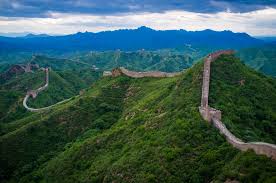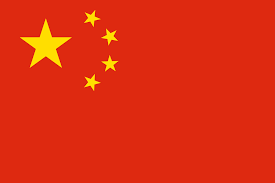 Every year, we translate hundreds of documents from Chinese to English and English to Chinese for individuals. The majority of our personal Chinese translator service clients require documents translated into English for immigration purposes, NAATI certified of course!Common documents that are requested for translation include:
Every year, we translate hundreds of documents from Chinese to English and English to Chinese for individuals. The majority of our personal Chinese translator service clients require documents translated into English for immigration purposes, NAATI certified of course!Common documents that are requested for translation include:
- birth certificates, marriage certificates, driver’s licences, academic transcripts, police checks, diploma and degree certificates and ID cards.
Chinese Translation Services for Individuals
Are your Chinese translator’s NAATI accredited?
Our Chinese translation services are 100% NAATI accredited and certified. Working with a team of highly competent native Mandarin speakers allows us to be truly fluent between Chinese and English.
If you need a Chinese NAATI translator, look no further! Not only are our professional Chinese translators fluent in Mandarin and English, they are qualified and trained professional linguists, ready to translate your English documents into Simplified Chinese and Traditional Chinese and vice versa.
How fast is your Chinese translation service?
Most Chinese translation services are completed within 2-3 business days and sent to you by email. If you need a hard copy, do let us know and please allow a further 2-3 business days for the postage (additional postage and handling fee applies). Need your translation sooner? Ask us about our Express and Instant Chinese translation services. For translation of Chinese documents into English, the majority of 1 page documents used for immigration purposes are deemed as ‘standard documents’ and are priced at a flat rate per document. We offer different translation speed offerings to suit the needs of our Chinese clients. Please note that the pricing below is indicative only and you will need to send through scanned copies of your documents via our Enquiry Form in order to receive a firm quote for our Chinese translator service. Do you need high quality translations from English into Chinese or Chinese into English? Our Chinese translation service for business and Government is a premium translation service available from English into Chinese and Chinese into English. We can translate any documents including legal documents, engineering manuals, marketing material and immigration documents. All of our Chinese translators are NAATI accredited and experienced professionals. We work with many of Australia’s leading private and public sector organisations and are Australia’s industry leaders. No matter whether your Chinese translation request is for legal translations, technical translations or marketing translations, you can trust that OPAL Translation can assist you. Our project management staff can advise on the best way to organise your Chinese translation project, as well as explain how we use our state of the art quality assurance process to deliver world-class Chinese translation services. Translation of ‘non-standard’ documents are priced at a per 100 word rate. The pricing below is for indicative purposes only and can vary depending on factors such as delivery schedule, language and availability. For a quote, please complete the enquiry form and attach your documents and we will gladly provide you with a firm quote.NAATI Accredited
Express Service Option
Competitive Prices
Pricing for Chinese Translations - for individuls
OPAL Standard
$69/ per document
OPAL Express
$138/ per documentMOST POPULAR
OPAL Instant
$330/ per document
Chinese Translation Services for Business & Government

Pricing for Chinese Translations - for Business & Government
OPAL Budget
$21/ per 100 words
OPAL Advanced
$26/ per 100 words
OPAL Budget + Checking
$31/ per 100 wordsMOST POPULAR
OPAL Technical + Checking
$39/ per 100 words
The Chinese language, also known as Standard Mandarin is China’s official language. It is also used in Taiwan, Singapore, Mongolia and many more.
Overview
The Chinese language is usually used in Traditional Chinese or Simplified Chinese when in its written form. In general, Simplified Chinese is associated with the Mandarin’s spoken language and the Traditional Chinese with the Cantonese’s spoken language.
There are around 13 main dialects that compose the Chinese language group. These includes Yue (Cantonese), Standard Chinese or Mandarin, Wu (Shanghaiese), Minnan (Hokkien-Taiwanese), Minbei (Fuzhou), Gan, Xiang and the Hakka dialects. Each of the languages are mutually unintelligible to one another in some degress.
The Mandarin or Standard Chinese is the most spoken language among all of the Chinese language group with over 70% of China’s population using it. As such, it has become the country’s official language.
Simplified vs. Traditional Chinese Translation
In written form, the Chinese characters can only be classified into two: Simplified and Traditional Chinese. But what’s the difference?
When you are in need of a Chinese translation service or if you are writing in Chinese, you will need to consider the people and the location to select the system that you should use.
- Simplified Chinese
-This is mostly known as the ‘Spoken Mandarin’ and simplifies complex characters into only a few strokes. Most of these are into common caoshu shorthand variants. You will usually find it being used across Singapore and most of China. - Traditional Chinese
-On the other hand, Traditional Chinese is associated with the ‘Spoken Cantonese’ and usually used in Taiwan, Hong Kong, Macau and other Chinese communities abroad ( except Malaysia and Singapore). The style comes from most standardized character forms which goes back to as far as the late Han dynasty.
Quick Facts About the Chinese Language
Here is an insight on the Chinese language translation process which can be beneficial for you as a translation buyer.
- Unlike other languages, Chinese uses more than one lettering system. Mainland China residents use Mandarin or Simplified Chinese while the ones outside of China prefer Traditional Chinese.
- A majority of the spoken dialects in and around the Southwest and Northern part of China come under Mandarin. Between each dialect, there are certain differences in terms of grammar, pronunciation, and vocabulary that exist.
- Mandarin has more poly-syllabic words compared to other Chinese dialects.
- In a Chinese dictionary, there exists around 56,000 characters but a lot of those are not used regularly. Only around 3,000 to 8,000 characters are being used on a regular basis. Now, there are organisations who simply the Chinese language in hopes of increasing the literacy rates of today.
- Out of 56,000 Chinese characters, knowing only 2,000 of makes you literate with the language.
- The Chinese language and its dialects uses characters to show their principles, thoughts and characters.
- Aside from China, Singapore is the only other country that has adopted the Simplified Chinese language officially.
Doing Business in China
- Timezone: UTC+8
- Business Hours: Weekdays, from 8:00 AM to 6:00 PM
- Capital: Beijing
- International Dial Code: +86
- Currency: CNY / YUAN / ¥
- Official language: Simplified Chinese
If you are planning on doing business in China, you need to know that it is not a country that you should approach bootstrapped or approach lightly. With over a thousand years of developed cultures, languages, religions and nations, you have to be aware of what are the do’s and don’ts.
Each province and city across the country have their very own unique subcultures. Take your time and consider all the cultural dimensions of the country. Get to know the different cultural customs as well as the appropriate hierarchy. Don’t just go and wear casual clothes. Businesses require formal clothess so you should do the same to show that you are serious about doing business. Lastly, you have to put importance in your Chinese translation so you can easily communicate what you want in writing.
